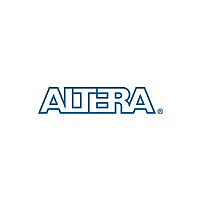ep1m120 Altera Corporation, ep1m120 Datasheet - Page 43

ep1m120
Manufacturer Part Number
ep1m120
Description
Programmable Logic Device Family
Manufacturer
Altera Corporation
Datasheet
1.EP1M120.pdf
(86 pages)
Available stocks
Company
Part Number
Manufacturer
Quantity
Price
Company:
Part Number:
ep1m120F484C5
Manufacturer:
ALTERA
Quantity:
3 000
Company:
Part Number:
ep1m120F484C5N
Manufacturer:
ALTERA
Quantity:
3 000
Company:
Part Number:
ep1m120F484C6
Manufacturer:
ALTERA
Quantity:
885
Company:
Part Number:
ep1m120F484C6ES
Manufacturer:
a
Quantity:
1
Company:
Part Number:
ep1m120F484C6N
Manufacturer:
ALTERA
Quantity:
181
Altera Corporation
CAM is used for high-speed search operations. When searching for data
within a RAM block, the search is performed serially. Thus, finding a
particular data word can take many cycles. CAM searches all addresses in
parallel and outputs the address storing a particular word. When a match
is found, a match flag is set high. CAM is ideally suited for applications
such as Ethernet address lookup, data compression, pattern recognition,
cache tags, fast routing table lookup, and high-bandwidth address
filtering.
Figure 22. CAM Block Diagram
The Mercury on-chip CAM provides faster system performance than
traditional discrete CAM. Integrating CAM and logic into the Mercury
device eliminates off-chip and on-chip delays, improving system
performance.
When in CAM mode, the ESB implements a 32-word, 32-bit CAM. Wider
or deeper CAM, such as a 32-word, 64-bit or 128-word, 32-bit block, can
be implemented by combining multiple CAM blocks with some ancillary
logic implemented in LEs. The Quartus II software automatically
combines ESBs and LEs to create larger CAM blocks.
CAM supports writing “don’t care” bits into words of the memory. The
don’t-care bit can be used as a mask for CAM comparisons; any bit set to
don’t-care has no effect on matches.
CAM can generate outputs in three different modes: single-match mode,
multiple-match mode, and fast multiple-match mode. In each mode, the
ESB outputs the matched data’s location as an encoded or unencoded
address. When encoded, the ESB outputs an encoded address of the data’s
location. For instance, if the data is located in address 12, the ESB output
is 12. When unencoded, each ESB port uses its 16 outputs to show the
location of the data over two clock cycles. In this case, if the data is located
in address 12, the 12th output line goes high.
encoded CAM outputs and unencoded CAM outputs, respectively.
Figure 22
shows the CAM block diagram.
Mercury Programmable Logic Device Family Data Sheet
data[ ]
wraddress[ ]
wren
inclocken
inaclr
inclock
data_address[ ]
outclocken
outclock
Figures 22
outaclr
match
and
23
show the
43
13












